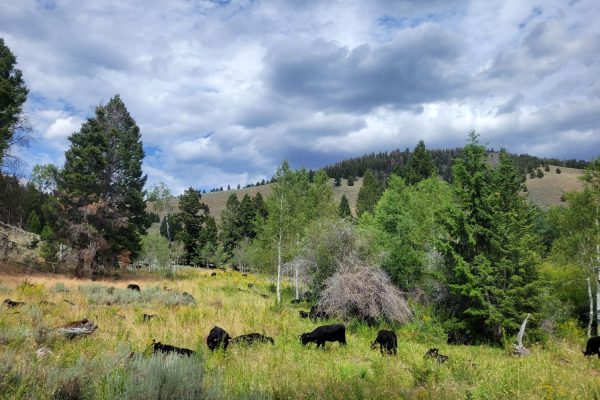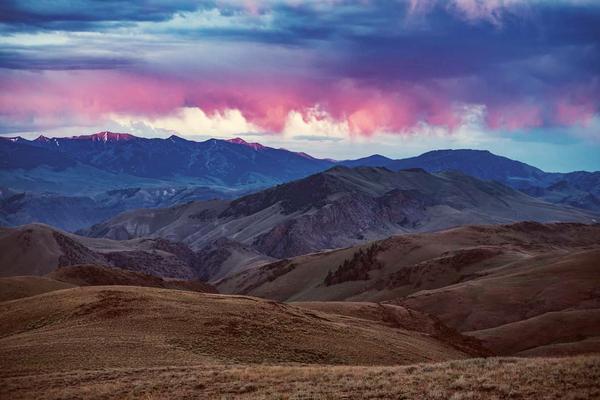 This week a customer who used to live in the Netherlands contacted me. She was wondering if our beeves go inside a barn for part of the year. She was raised in dairy country, in one of the north provinces of the Netherlands, as were my parents. There, as in the much of the US, milk cows are kept inside for part of the year, thereby protecting them from the elements. In fact, in the early part of the 1900s, many Dutch farmers still lived in the same structure with their cows. It was a common practice over hundreds of years to build the house and barn as a singular unit.
This week a customer who used to live in the Netherlands contacted me. She was wondering if our beeves go inside a barn for part of the year. She was raised in dairy country, in one of the north provinces of the Netherlands, as were my parents. There, as in the much of the US, milk cows are kept inside for part of the year, thereby protecting them from the elements. In fact, in the early part of the 1900s, many Dutch farmers still lived in the same structure with their cows. It was a common practice over hundreds of years to build the house and barn as a singular unit.
I have been in several old Netherlands farmsteads where you could walk right out of the kitchen into the milk barn. There, several Holstein cows (the black and white spotted ones) would be stalled, and in many barns, the hired help was given sleeping quarters in tiny wall closet/bed enclosures just a few yards away from the cows.
I visited one of these old house/barns, now a museum, with my Dad several years ago in the tiny Dutch village of Allingawier in the northern province of Friesland. He walked past the cow stalls to the wall, opened a high door in it, and pointed to the straw-filled bunk inside. This was the very place, in this particular barn, where 75 years ago he would sleep as a 14 year old working lad!
These cow barns only held 12 head of milk cows. The resourceful Dutch used even the heat from cows and insulation from hay in the loft above to provide thermal mass to heat their homes. After all, there was little wood in that country to fire the stove. There was only the occasional coal from Germany, or turf, as they called peat. This was dug from the now-dry polders, which were sub sea-level tidal flats that they farmed for hundreds of years, fruit of their creative dike and windmill pump engineering.
Small herds of cows in these barns had plenty of space and ventilation to stay fairly healthy. In fact, centuries of genetic selection created a cow that thrived under such conditions. It meant that the same cow in the great out-of-doors could die, especially when wind off the nearby North Sea would bring plummeting temperatures—and moisture. Hence, sheltering and roofing these dairy bovines became a necessity, a result of man’s own invention of cow selection.
Go with me, if you will, for a short journey across the North Sea. The latitude is even farther north than the Netherlands. The craggy form of Scotland rises out of the sea several hundred miles to the north and west of the Friesian Islands. Here, on this granitic uplift, the climate is even harsher, as Scotland often finds itself weaned from the Gulf Stream flow that is the radiator heating most of Western Europe and England. Winds reverse here to northerly, and have created an often forlorn, unforested landscape not unlike the tundra of the far North.
This is the ancient home of those hardy breeds of beef cattle, descendants of wild Aurochs, the native cows of the European continent: Angus, Hereford, and Galloway. Elements of all those thick-haired breeds comprise our herd here on Alderspring, and thrive, stoically standing impervious to even a January blizzard. We’ve had to search for beef genetics within those breeds that are the thriving-type lineages, but for the most part, I believe we have found them.
Putting them in a barn or confinement would be wrong, because they are true free rangers. Our summer cattle wander over 100s of miles of high mountain country. Even in the winter, they range on big pastures at will. When I must put an individual into the barn to give care (perhaps for a wound) they are visibly stressed in the skyless shelter.
They are not pets. They are domesticated wild animals, with their instincts intact. Even on days when I think they will seek some shelter in the brush, they don’t, instead preferring to stay out on big pasture, grazing the summer aftermath we do not harvest but leave for winter stockpile grazing, or nibbling at the hay we give them to diversify their diet. They are hairy, warm, fat, and it seems, content.
I’ll always remember a Vermont winter when I was 12, and visiting and working part-time on a dairy over the winter holiday. It was a brutally cold New England winter, and the Holsteins were inside. Pnuemonia tore its way through the herd, killing many and ruining the milk of others. A dairy disaster. A confinement conundrum; humankind had constructed a cow through breeding and management that could not handle outside weather, yet was susceptible to the indoor concentration of airborne pathogens.
Now, more advanced antibiotics, vaccines and ventilation have reduced the threat of pneumonia, and year round confinement dairying has become the norm instead of the exception. I know of several dairies that have in excess of 40,000 cows inside, year round for the sake of a controlled environment and convenience.
Beef cattle are rapidly going the same way, although their “indoors” is confinement feeding operations in dry climate areas like in Kansas, Arizona and Texas. It’s a paradigm of efficiency and production, but not necessarily one of sustainability and resiliency.
We’ll keep taking the hardy, ancient bloodline beeves that still prefer the outdoors. We believe that their traveling nature, free choice of forage and resolute wellness, unaided by antibiotics or other chemical amendments, makes the best wild protein that money can buy.
And it is a boon for the beeves health as well. Their wellness, based on fitness and free choice nutrition from wild and nutrition-dense plants is in complete juxtaposition to their often obese couch potato feedlot and confinement bovine relatives who live medicated lives in shelters or in warmer climes (many of these are ironically still termed “grass fed”). We’ve never had an animal lose condition or weight from exposure during adverse weather conditions. They simply go to a place on the ranch where they are safe, and out of the wind. Knowing that, we sleep in peace. They have what it takes.







Leave a Reply